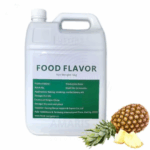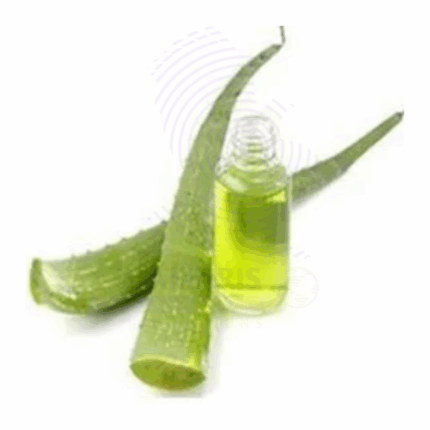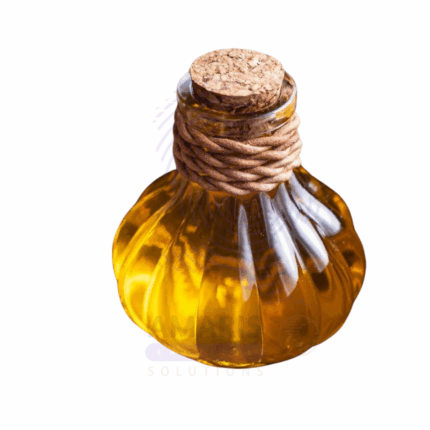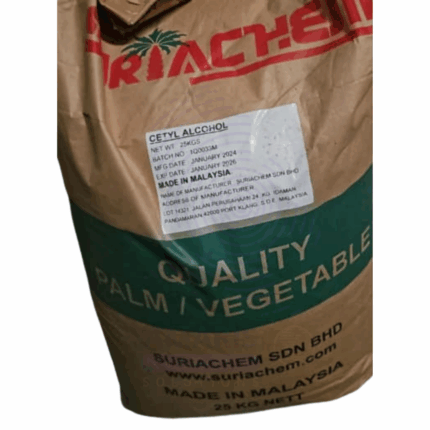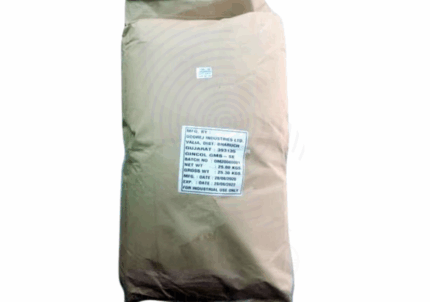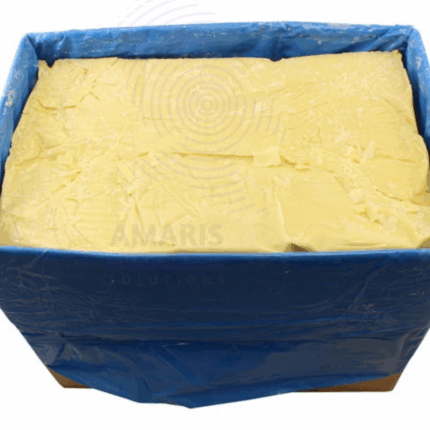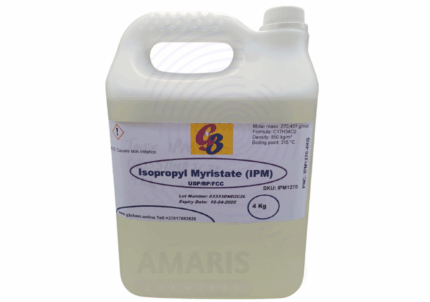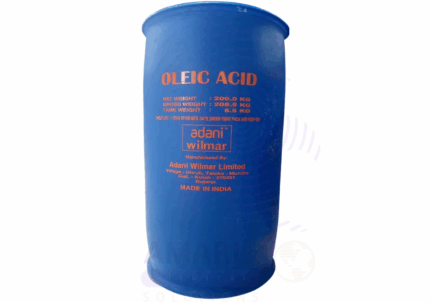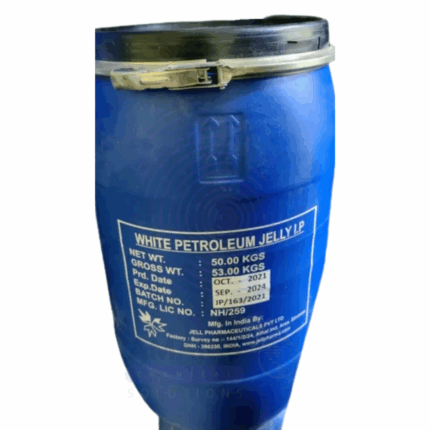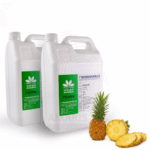
Pineapple Fragrance Oil
$ 25.00 Original price was: $ 25.00.$ 24.77Current price is: $ 24.77.
Watermelon Seed Oil
Whatsapp Order
Watermelon Seed Oil, also known as Kalahari Oil or Ootanga Oil, is a lightweight, fast-absorbing oil cold-pressed from the seeds of the Citrullus lanatus fruit. This oil is pale yellow with a mild, nutty aroma and is rich in essential fatty acids—particularly linoleic acid (omega-6) and oleic acid (omega-9)—as well as antioxidants, phytosterols, and vitamins A, B, and E. Known for its nourishing, non-comedogenic, and balancing properties, Watermelon Seed Oil is widely used in skincare, haircare, baby care, and massage products. It is ideal for all skin types, especially oily, acne-prone, and sensitive skin due to its ability to dissolve sebum and unclog pores while maintaining hydration.
Description
Table of Contents
Toggle
Watermelon Seed Oil
Primary Uses
- Cosmetics and Personal Care
- Used in facial serums and oils for its balancing, anti-inflammatory, and non-greasy texture
- Included in moisturizers and creams to hydrate and nourish skin without clogging pores
- Added to anti-aging products for antioxidant protection and skin elasticity support
- Applied in baby oils and diaper creams for gentle, soothing care on sensitive skin
- Used in sunscreens and after-sun treatments to calm and repair UV-exposed skin
- Incorporated in lip balms and glosses for smooth application and emollient action
- Used in hair oils, conditioners, and scalp treatments to strengthen hair and reduce flaking
- Blended into shaving oils and post-shave balms for moisturizing and irritation reduction
- Added to body oils and massage blends for its glide and skin-softening properties
- Topical Applications
- Applied directly to the face as a light moisturizer or oil cleanser for acne-prone skin
- Blended into salves or balms for soothing irritated or inflamed areas
- Used in stretch mark and scar treatments for its regenerative qualities
Secondary Uses
- Pharmaceutical and Nutraceutical Applications
- Used in formulations for dermatological creams and therapeutic skin preparations
- Occasionally included in dietary supplements for its omega fatty acids (where food grade is available)
- Fragrance and Ambient Scenting
- Used as a neutral carrier oil in essential oil diffuser blends and natural perfumes
- Blended with aromatic compounds to create lightweight, fast-absorbing body oils
- Industrial and Specialty Applications
- Used in premium soap making as a conditioning and cleansing agent
- Employed in cosmetic manufacturing as a carrier oil for actives and essential oils
- Applied in herbal skincare lines as a base for infusion and maceration of botanicals
KEY PRODUCT FEATURES
1. Basic Identification Attributes
- Botanical Name: Citrullus lanatus
- Common/Trade Name: Watermelon Seed Oil / Kalahari Oil / Ootanga Oil
- INCI Name: Citrullus Lanatus (Watermelon) Seed Oil
- CAS Number: 90244-99-8
- HS Code: 1515.90
- Synonyms: Kalahari Melon Seed Oil, Watermelon Kernel Oil
2. Physical & Chemical Properties
- Physical State: Liquid vegetable oil
- Color & Odor: Pale yellow; light, nutty aroma
- Solubility: Insoluble in water; soluble in alcohols and fixed oils
- Refractive Index: 1.470 – 1.485
- Specific Gravity: 0.910 – 0.930
- Main Components: Linoleic acid, oleic acid, palmitic acid, stearic acid, tocopherols
3. Safety & Hazard Attributes
- GHS Classification: Not classified as hazardous
- Toxicity: Non-toxic; suitable for cosmetic and personal care applications
- Exposure Limits: No specific limits; standard cosmetic use guidelines apply
- Allergen Information: Considered hypoallergenic; patch testing recommended for sensitive users
4. Storage & Handling Attributes
- Storage Conditions: Store in a cool, dry, dark place in tightly sealed containers
- Container Type: Amber glass, aluminum, or food-grade HDPE drums
- Shelf Life: 12 to 24 months depending on storage conditions
- Handling Precautions: Handle with clean, dry tools; avoid contamination
5. Regulatory & Compliance Attributes
- Compliant with cosmetic and personal care regulations (INCI-listed)
- Produced in GMP-certified and ISO-compliant facilities
- Not classified as hazardous for transportation
6. Environmental & Health Impact
- Biodegradability: Biodegradable under normal environmental conditions
- Ecotoxicity: Low risk at typical cosmetic concentrations
- Bioaccumulation: Not expected to bioaccumulate
SAFETY HANDLING PRECAUTIONS
Safety Handling Precautions
- PPE Required: None under normal use; gloves recommended for industrial quantities
- Handling Guidelines: Avoid contamination and moisture contact
First Aid Measures
- Inhalation: Not volatile; inhalation unlikely
- Skin Contact: Safe; discontinue if irritation occurs
- Eye Contact: Rinse with clean water if accidentally introduced
- Ingestion: Food-grade oil is non-toxic; not intended for casual consumption unless certified
Firefighting Measures
- Fire Hazards: Combustible at high temperatures
- Extinguishing Media: Dry chemical, CO₂, foam, or water spray
- Special Precautions: Use full protective equipment if handling large fires
- Hazardous Combustion Products: Carbon oxides and hydrocarbons
Related products
Aloe Vera Oil
Aloe Vera Oil is an oil-based extract derived by infusing Aloe vera (Aloe barbadensis) leaves into a carrier oil such as coconut, soybean, or sunflower oil. It captures the beneficial compounds of aloe—including polysaccharides, vitamins, enzymes, and amino acids—in an oil-soluble form ideal for cosmetic, therapeutic, and personal care applications. Known for its soothing, anti-inflammatory, and moisturizing properties, Aloe Vera Oil is widely used in skin and hair care formulations.
This gentle, skin-friendly oil is suitable for sensitive skin and is commonly employed in after-sun products, healing ointments, massage oils, and anti-aging creams. It provides hydration, calms irritation, and promotes skin regeneration while adding emollient and conditioning benefits.
Baobab Oil
Baobab Oil is a luxurious, cold-pressed oil extracted from the seeds of the Adansonia digitata (baobab) tree, native to Africa. Rich in omega fatty acids (especially omega-3, 6, and 9), vitamins A, D, E, and F, and powerful antioxidants, Baobab Oil is prized for its deep moisturizing, skin-rejuvenating, and anti-inflammatory properties. It is a light, non-greasy oil that absorbs quickly into the skin, making it ideal for a wide range of cosmetic and personal care applications.
Baobab Oil is especially suited for dry, sensitive, or mature skin. It supports skin elasticity, improves tone, and helps reduce the appearance of scars and stretch marks. In hair care, it nourishes and protects, leaving hair soft and manageable. Its natural stability and skin compatibility make it a premium ingredient in high-performance formulations.
Cetyl Alcohol
Cetyl Alcohol, also known as 1-Hexadecanol or Palmityl Alcohol, is a fatty alcohol derived primarily from natural sources such as palm oil and coconut oil. It appears as a waxy, white to pale yellow solid with a faint fatty odor. Cetyl Alcohol is widely used in cosmetic, pharmaceutical, and industrial formulations due to its emollient, emulsifying, thickening, and stabilizing properties. It helps improve texture, consistency, and moisturizing effects in personal care products. Cetyl Alcohol is compatible with many ingredients, making it a versatile multifunctional ingredient.
Cetyl Palmitate
Cetyl Palmitate is a naturally derived ester formed by the reaction of cetyl alcohol and palmitic acid. It appears as a white to off-white waxy solid with a mild fatty odor. This compound is widely used in cosmetic, pharmaceutical, and industrial formulations for its emollient, thickening, and texture-enhancing properties. Cetyl Palmitate imparts a smooth, creamy feel to products and contributes to improved stability and consistency in creams, lotions, balms, and ointments. Its film-forming and skin-conditioning attributes make it a preferred ingredient in personal care products as well as in specialty industrial applications.
Cocoa Butter
Cocoa Butter, also known as Theobroma oil, is a pale-yellow, edible fat extracted from cocoa beans, primarily from Theobroma cacao. It has a smooth, creamy texture and a mild, characteristic chocolate aroma. Cocoa Butter is solid at room temperature but melts near body temperature, which gives it a luxurious feel when applied to skin or consumed. It is highly valued for its emollient, moisturizing, and protective properties. Cocoa Butter is widely used in cosmetics, pharmaceuticals, food, and confectionery industries. Its stable composition rich in fatty acids such as stearic, palmitic, and oleic acids imparts excellent oxidative stability and a long shelf life.
Isopropyl Myristate
Isopropyl Myristate is a clear, colorless, and oily liquid ester formed by the reaction of isopropyl alcohol and myristic acid. It has a mild, pleasant odor and excellent spreading properties. IPM is widely used in cosmetics, pharmaceuticals, and industrial applications as an emollient, solvent, and penetration enhancer due to its ability to improve texture and absorption of topical formulations.
Oleic Acid
Oleic Acid is a naturally occurring monounsaturated fatty acid commonly derived from vegetable oils such as olive, sunflower, and canola oils. This oily liquid is widely used in the chemical, pharmaceutical, cosmetic, and food industries due to its excellent emollient, surfactant, and stabilizing properties. Oleic Acid 75% is a key raw material in manufacturing soaps, detergents, lubricants, and personal care products. Its amphiphilic nature makes it an effective emulsifier and penetration enhancer.
Petroleum Jelly
Petroleum Jelly is a semi-solid mixture of hydrocarbons, originally derived from petroleum refining. It is odorless, colorless (or slightly yellow), and known for its moisturizing, protective, and lubricating properties. Widely used in cosmetics, pharmaceuticals, and industrial applications, Petroleum Jelly forms a barrier on the skin that locks in moisture and protects against irritants. The 175kg packaging is typical for bulk industrial or large-scale cosmetic use.


 Preservatives(food)
Preservatives(food) Flavor Enhancers
Flavor Enhancers Acidulants
Acidulants Sweeteners
Sweeteners Antioxidants
Antioxidants Colorants(food)
Colorants(food) Nutraceutical Ingredients (food)
Nutraceutical Ingredients (food) Nutrient Supplements
Nutrient Supplements Emulsifiers
Emulsifiers
 Collectors
Collectors Dust Suppressants
Dust Suppressants Explosives and Blasting Agents
Explosives and Blasting Agents Flocculants and Coagulants
Flocculants and Coagulants Frothers
Frothers Leaching Agents
Leaching Agents pH Modifiers
pH Modifiers Precious Metal Extraction Agents
Precious Metal Extraction Agents
 Antioxidants(plastic)
Antioxidants(plastic) Colorants (Pigments, Dyes)
Colorants (Pigments, Dyes) Fillers and Reinforcements
Fillers and Reinforcements Flame Retardants
Flame Retardants Monomers
Monomers Plasticizers
Plasticizers Polymerization Initiators
Polymerization Initiators Stabilizers (UV, Heat)
Stabilizers (UV, Heat)
 Antifoaming Agents
Antifoaming Agents Chelating Agents
Chelating Agents Coagulants and Flocculants
Coagulants and Flocculants Corrosion Inhibitors
Corrosion Inhibitors Disinfectants and Biocides
Disinfectants and Biocides Oxidizing Agents
Oxidizing Agents pH Adjusters
pH Adjusters Scale Inhibitors( water)
Scale Inhibitors( water)
 Antioxidants(cosmetic)
Antioxidants(cosmetic) Emollients
Emollients Fragrances and Essential Oils
Fragrances and Essential Oils Humectants
Humectants Preservatives
Preservatives Surfactants(cosmetic)
Surfactants(cosmetic) Thickeners
Thickeners UV Filters
UV Filters
 Fertilizers
Fertilizers Soil Conditioners
Soil Conditioners Plant Growth Regulators
Plant Growth Regulators Animal Feed Additives
Animal Feed Additives Biostimulants
Biostimulants Pesticides (Herbicides, Insecticides, Fungicides)
Pesticides (Herbicides, Insecticides, Fungicides)
 Active Pharmaceutical Ingredients (APIs)
Active Pharmaceutical Ingredients (APIs) Excipients
Excipients Solvents(pharmaceutical)
Solvents(pharmaceutical) Antibiotics
Antibiotics Antiseptics and Disinfectants
Antiseptics and Disinfectants Vaccine Adjuvants
Vaccine Adjuvants Nutraceutical Ingredients (pharmaceutical)
Nutraceutical Ingredients (pharmaceutical) Analgesics & Antipyretics
Analgesics & Antipyretics
 Analytical Reagents
Analytical Reagents Solvents(lab)
Solvents(lab) Chromatography Chemicals
Chromatography Chemicals Spectroscopy Reagents
Spectroscopy Reagents microbiology-and-cell-culture-reagents
microbiology-and-cell-culture-reagents Molecular Biology Reagents
Molecular Biology Reagents Biochemical Reagents
Biochemical Reagents Inorganic and Organic Standards
Inorganic and Organic Standards Laboratory Safety Chemicals
Laboratory Safety Chemicals Specialty Laboratory Chemicals(Special Laboratory Equipment)
Specialty Laboratory Chemicals(Special Laboratory Equipment)
 Demulsifiers
Demulsifiers Hydraulic Fracturing Fluids
Hydraulic Fracturing Fluids Scale Inhibitors(oil)
Scale Inhibitors(oil) Surfactants(oil)
Surfactants(oil) Drilling Fluids
Drilling Fluids
 Dyes and Pigments
Dyes and Pigments Bleaching Agents
Bleaching Agents Softening Agents
Softening Agents Finishing Agents
Finishing Agents Antistatic Agents
Antistatic Agents
 Admixtures
Admixtures Waterproofing Agents
Waterproofing Agents Sealants and Adhesives
Sealants and Adhesives Curing Compounds
Curing Compounds Concrete Repair Chemicals
Concrete Repair Chemicals Anti-Corrosion Coatings
Anti-Corrosion Coatings
 Surfactants(cleaning)
Surfactants(cleaning) Builders
Builders Enzymes
Enzymes Solvents (Cleaning)
Solvents (Cleaning) Fragrances
Fragrances
 Electronic Chemicals
Electronic Chemicals Catalysts
Catalysts Lubricants
Lubricants Photographic Chemicals
Photographic Chemicals Refrigerants
Refrigerants Automotive chemicals
Automotive chemicals Pyrotechnic Chemicals
Pyrotechnic Chemicals
 Biodegradable Surfactants
Biodegradable Surfactants Bio-based Solvents
Bio-based Solvents Renewable Polymers
Renewable Polymers Carbon Capture Chemicals
Carbon Capture Chemicals Wastewater Treatment Chemicals
Wastewater Treatment Chemicals
 Pigments
Pigments Solvents(paint)
Solvents(paint) Specialty Coatings
Specialty Coatings Binders/Resins
Binders/Resins Additives
Additives Driers
Driers Anti-Corrosion Agents
Anti-Corrosion Agents Functional Coatings
Functional Coatings Application-Specific Coatings
Application-Specific Coatings
 Fresh Herbs
Fresh Herbs Ground Spices
Ground Spices Whole Spices
Whole Spices Spice Blends
Spice Blends Dried Herbs
Dried Herbs
 Leavening Agents
Leavening Agents Dough Conditioners
Dough Conditioners Flour Treatments
Flour Treatments Fat Replacers
Fat Replacers Decoratives
Decoratives Preservatives(baking)
Preservatives(baking)
 Plasticizers & Softeners
Plasticizers & Softeners Reinforcing Agents
Reinforcing Agents Adhesion Promoters
Adhesion Promoters Vulcanizing Agents
Vulcanizing Agents Antidegradants
Antidegradants Blowing Agents
Blowing Agents Fillers & Extenders
Fillers & Extenders Accelerators & Retarders
Accelerators & Retarders
